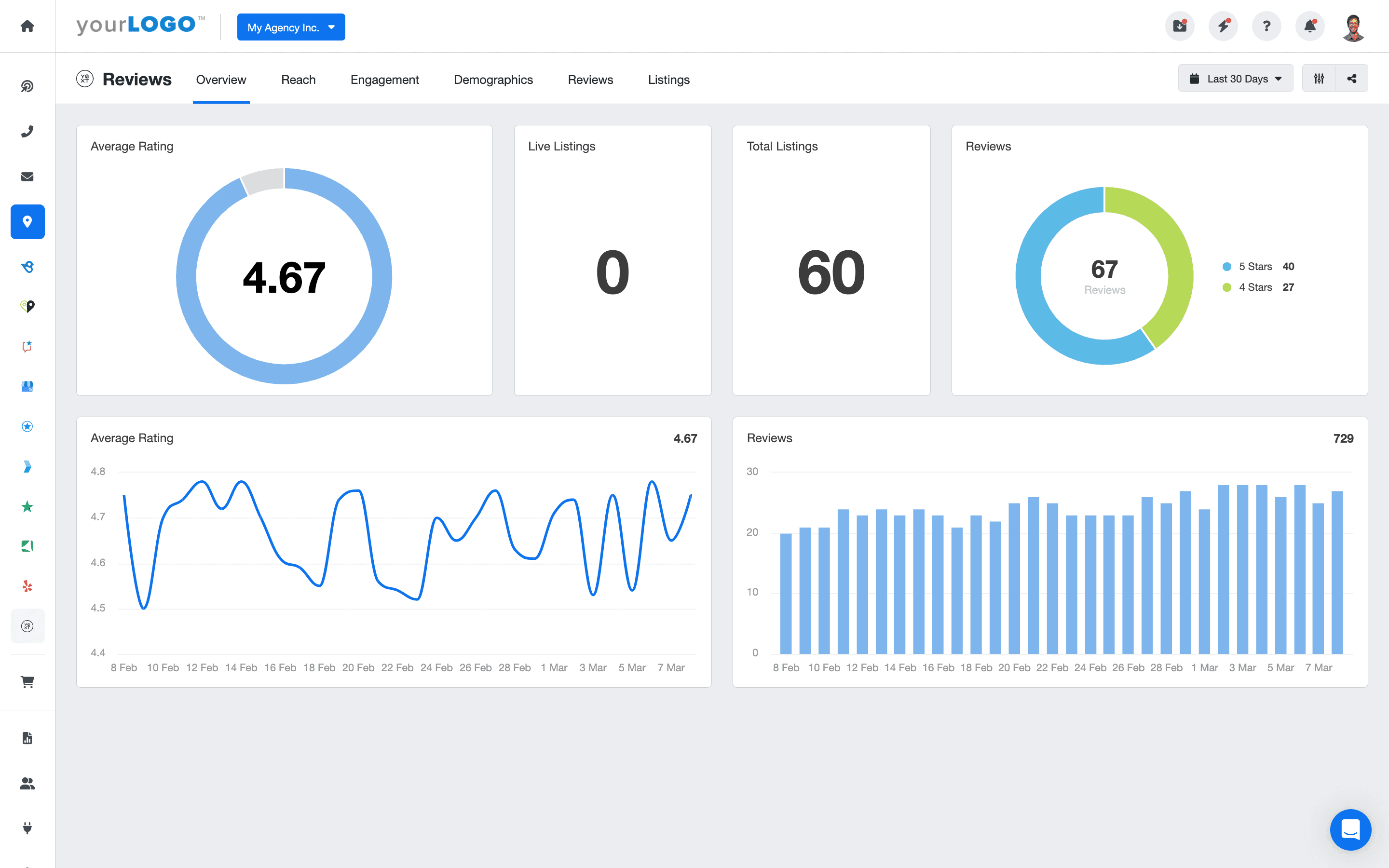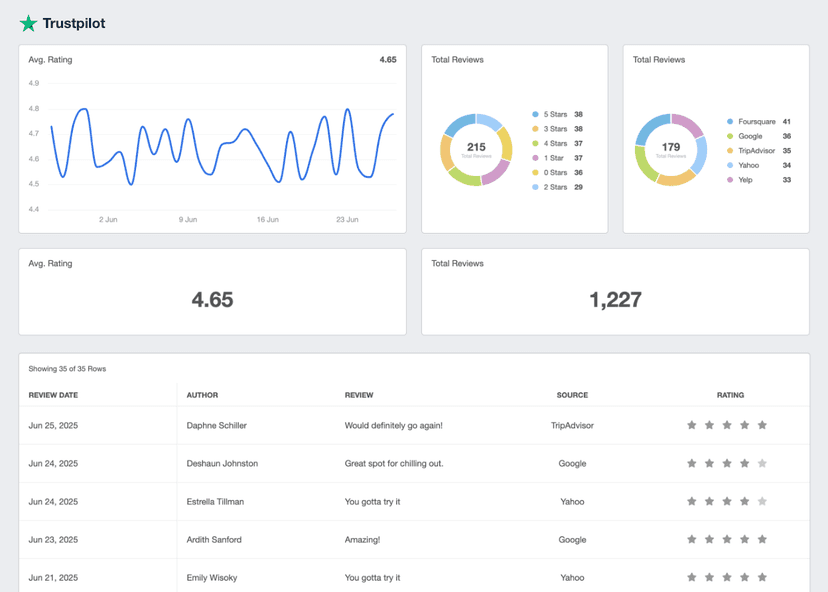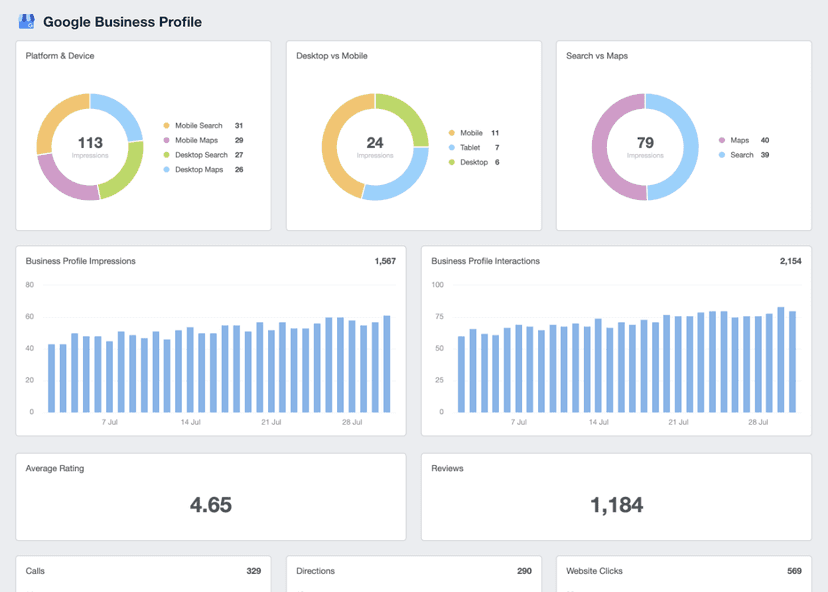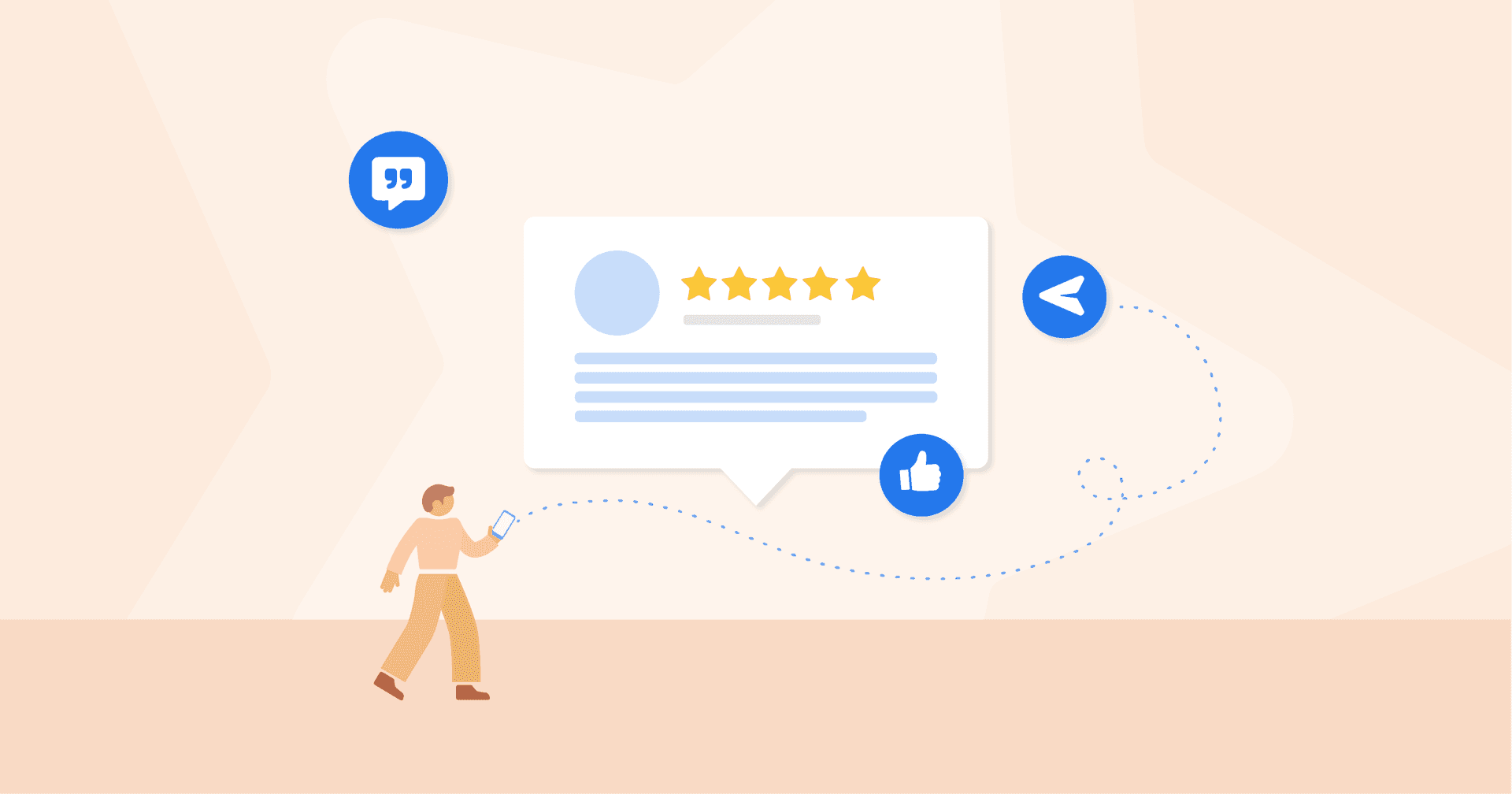Review Count
Visibility Boost
Boost Review Count to enhance product or service visibility on search engines and marketplace platforms.
Trust Building
Highlight the high number of reviews in marketing communications to build trust with potential customers.
Feedback Loop
Analyze Review Count trends to gauge customer interest and satisfaction over time.
Competitive Analysis
Compare Review Counts with competitors to understand market position and reputation.
Why Review Count Is Important
Understanding Review Count helps gauge consumer engagement. This metric reflects the quantity and the extent of interaction customers have with a product or service. Are they compelled to leave a review following a positive or negative experience?
A high Review Count signals to prospective buyers that a product or service is popular and has been tested by many people, significantly influencing purchasing decisions. A large number of reviews also enhances visibility on digital platforms, as algorithms frequently favor products with higher engagement in search rankings and recommendations.
For businesses, each review represents direct customer feedback, offering valuable insights into what is working well and areas needing improvement. It's an important element in the cycle of continuous improvement, enabling businesses to tailor their offerings more closely to customer needs and preferences.
Trust is paramount (on and offline), and a healthy volume of reviews serves as social proof. Businesses and marketers alike are always aiming to reassure potential customers of the credibility and reliability of a product or service.

Stop Wasting Time on Manual Reports... Get Insights Faster With AgencyAnalytics
How Review Count Relates To Other KPIs
Review Count is one metric highlighted in a much larger digital marketing dashboard. Think about how a High Review Count has the potential to elevate a product's visibility online. Search engines and ecommerce platforms typically rank products with more reviews higher than those with fewer, making these products more likely to be seen and purchased. This visibility leads to increased sales–a direct revenue booster for businesses.
At the same time, the quality of reviews is also something to pay close attention to as it impacts customer perception and trust. Positive reviews enhance a brand's reputation, leading to better customer retention rates and potentially higher customer lifetime value. However, negative reviews offer a unique opportunity for businesses to address concerns, improve their product or service, and demonstrate excellent customer service by engaging with reviewers.
Lastly, sentiment analysis from customer reviews helps inform product development and marketing strategies. Understanding what customers love or dislike about a product helps refine marketing messages, target the right audience more effectively, and make product adjustments that meet customer needs.

Key Factors That Impact Review Count
There are several elements that play a role in how many reviews a product or service receives. First, customer experience is at the heart of generating new reviews. A positive experience or a negative experience motivates customers to share their thoughts. Making it easier for customers to leave reviews, such as reminders or simplifying the process, increases the likelihood of receiving feedback.
Marketing strategies also significantly influence Review Counts. Campaigns designed to encourage reviews, such as follow-up emails after a purchase, will increase the number of reviews. Offering incentives for leaving a review (although this must be done carefully to avoid biasing the feedback) is another method to boost Review Count.
Product or service visibility is another important factor. Products that are more visible and get more sales or usage are naturally more likely to gather reviews. This means that strategies to improve search engine optimization (SEO), social media presence, and overall market penetration are indirect strategies to increase Review Count.

How To Measure Review Count
To measure Review Count, simply tally the total number of reviews across all online platforms where the product, service, or company is featured. This includes websites, social media channels, and other review sites specific to a client’s industry. Regularly monitoring reviews ensures Review Count accuracy, reflecting real-time customer feedback and engagement levels.
What Is a Good Review Count?
A good average Review Count varies by industry, but generally, a higher number indicates strong customer engagement and visibility. For most industries, having hundreds of reviews signals healthy interaction and significantly boosts trust and conversion rates. Further, the nature of the review (positive or negative) factors in as well. Having plenty of reviews that are mostly positive is the goal.
What Is a Bad Review Count?
A low Review Count, especially below 10, may signal weak customer engagement or a new presence in the market. It typically reflects poorly on credibility and deters potential customers, impacting overall business growth negatively. Additionally, having plenty of reviews that are primarily negative will also negatively impact the business.
How To Set Review Count Benchmarks and Goals
Agencies use historical data to set personalized Review Count benchmarks and goals. By analyzing past performance, marketers identify trends and set realistic targets that correlate with desired revenue outcomes.
To gain more granular insights, marketers segment Review Counts by platform, geographic location, or product line. Analyzing trends over time or during specific campaigns offers a deeper understanding of customer engagement patterns.
Comparing Review Count growth against sales growth reveals the impact of customer feedback on revenue, providing a more nuanced view of performance.
Why Review Count Matters to Clients
Clients view Review Count as a direct indicator of market presence and consumer trust. Having a large number of reviews often translates to higher visibility in search rankings, leading to increased traffic and potential sales.
Some clients primarily look at the volume of reviews, and others will look at the sentiment behind the engagement, signaling product or service satisfaction. This metric helps clients gauge market acceptance and identify areas for improvement, making it a huge part of customer relationship management and product development strategies.

Why Review Count Matters to Agencies
For agencies, Review Count is a significant metric to evaluate if a campaign was successful or not. A healthy Review Count indicates successful customer engagement and content virality, aspects agencies aim to enhance through targeted campaigns.
It also provides agencies with qualitative data to analyze sentiment and identify trends that inform future marketing initiatives.
From an agency perspective, monitoring and increasing Review Count is part of a broader strategy to boost client reputation, foster consumer loyalty, and ultimately drive business growth. This metric offers insights into the effectiveness of marketing efforts, helping agencies demonstrate their value and adjust tactics in real-time.

Best Practices When Analyzing and Reporting on Review Count
Conducting a thorough analysis of Review Count through various lenses helps marketers gain a deeper understanding of customer engagement and feedback trends. Here are some best practices to refine targeting, content, and overall strategy.
Ensure Data Accuracy for Review Counts
Look for any reviews that might be spam and exclude them from (or flag them) for informed decision-making and strategy development.
Analyze Review Count Trends Over Time
Identify patterns of customer engagement to highlight the effectiveness of marketing strategies and pinpoint periods of high or low engagement.
Compare Review Count Across Channels and Campaigns
Comparing Review Count across channels helps identify where the audience is most active and responsive, guiding resource allocation.
Align Review Count to Client Goals
Why does the client want an increase in reviews? Alignment in overall goals ensures efforts are focused on achieving outcomes that matter most to the client.
Visualize Review Count Performance
Creating visual representations of Review Count data makes it easier to comprehend trends, compare performance across different metrics or channels, and communicate feedback.
Offer Actionable Recommendations to Improve Review Count
Include recommendations about Review Count insights to improve marketing strategies. Suggest specific actions to boost customer engagement and feedback initiatives.
FAQs about review count
Still have questions about review count? Don’t worry—we’ve got you covered.
Review count in digital marketing refers to the total number of customer reviews a business has across platforms like Google, Yelp, and Facebook. It reflects how often customers engage publicly with a brand. A higher Review count typically signals a more established presence and can influence trust, conversion rates, and search rankings.
Review count is a critical KPI because it directly impacts a client’s online reputation and visibility. Agencies use it to measure how well a brand is engaging customers and building trust. More reviews often mean better local SEO, higher click-through rates, and stronger social proof—all essential to delivering client results.
A high review count boosts local SEO by signaling credibility to search engines. Platforms like Google factor review volume into local ranking algorithms, meaning businesses with more reviews are more likely to appear in top search results. It also increases user trust and click-through rates in local map packs.
Agencies increase review count by implementing review generation strategies, like automated email requests, in-store signage, and follow-up workflows. Using platforms like AgencyAnalytics, they track performance across review sites and identify which channels drive the most engagement.
Review count is the total number of reviews a business has. Review rating is the average score of those reviews, usually shown as stars (e.g., 4.7/5). While rating shows quality, review count shows quantity—and both metrics together provide a fuller picture of a business’s reputation.
Yext Dashboard Example

Related Integrations
How To Improve Review Count
Boosting Review Count aims to enhance online presence while building trust with potential customers. Here are three actionable tips to help increase Review Count.
Engage Socially
Use social media channels to encourage reviews. Regularly posting about the importance of customer feedback prompts followers to contribute their opinions.
Simplify Process
Make the review process as easy as possible. Provide direct links to the review pages in emails, on receipts, or via SMS to reduce the effort needed to leave a review.
Monitor Regularly
Actively monitor reviews and respond to them, whether positive or negative. This engagement shows customers that the business values their feedback, encouraging others to share their experiences.
Related Blog Posts
See how 7,000+ marketing agencies help clients win
Free 14-day trial. No credit card required.










